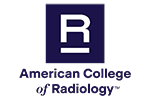Image/Video Gallery
Understanding Your Chest X-ray Report
Welcome to RadiologyInfo.org.
A chest x-ray helps your doctor diagnose the cause of symptoms, such as fever, cough, shortness of breath or chest pain, and to diagnose diseases of the lungs and heart. Your radiologist, a doctor specially trained to supervise and interpret radiology exams, will analyze the chest x-ray images, and write a report for your healthcare provider, who will then discuss the results with you.
At most healthcare facilities in the United States, your radiology report will be automatically available on your patient portal. You may end up seeing the report before your doctor or healthcare provider does. It's important to remember that the report is written for your healthcare provider, and it will likely contain medical terminology or words you may not understand.
Some medical terms in the report, such as “abnormal,” may look frightening, but may not be as serious as you think. Your doctor can help explain the importance of any findings that the radiologist mentions in your report. Many things that we see on your imaging are commonly seen in many patients and will cause you no harm.
Write down any questions you may have and talk to your provider or ask to speak to a radiologist.
A typical chest x-ray report will have a number of different sections, including technique, history, comparison, findings, and impression. In this video, I'll focus on typical things you may see in a chest x-ray report. I'll do this by showing an image of a normal chest x-ray. Remember that even some abnormal findings may not have a significant impact on your health.
The technique section of the record explains how the x-ray was obtained. If you are admitted to the hospital or visiting the ER, the x-ray machine may be brought to your room and a single image will be obtained while you are lying down or sitting up in bed. This is called a portable AP view. If you are an outpatient or getting the x-ray inside the radiology department while in the ER or hospital, you will often be standing for the x-ray and have both a frontal view called a “PA view” and a side view called a “lateral view” of your chest taken.
In the findings section of the report, the radiologist will comment on the lungs, airways, pleura, mediastinum, and bones. If something is normal, the radiologist may choose not to mention it. In the lungs, the black area outlined here in red, we are often looking for any consolidation or opacity, a whiter area of the lung, which could suggest a pneumonia, “pulmonary edema,” fluid in the lungs, inflammation or a “nodule,” many of which are benign.
If we see something in the lungs, the report may say something like, “opacity in the lung,” which may be pneumonia or “atelectasis.” Atelectasis is a small area of collapsed lung, usually occurring when a deep breath isn't taken and typically of no importance to your health. The radiologist may comment on how well your lungs are expanded using term like hypoinflated or hyperinflated. “Hypoinflation” may just be because you didn't or couldn't take a deep breath in, and “hyperinflation” may reflect a problem with your airways like asthma.
The radiologist will also look at the pleural space, the space between your lungs and the chest wall. If there is fluid in that space. It is called a “pleural effusion.” If there is air in that space, it is called “pneumothorax.” The radiologist will check the contours of the mediastinum outlined here in yellow, which includes your heart and large vessels like the aorta, the largest artery in the body. If it is normal, you may see the phrase “The cardiomediastinal silhouette is normal.” Conversely, you may notice an enlarged heart, “cardiomegaly” or dilated aorta.
The hila are at the sides of the mediastinum, highlighted here in blue. This is where the airways and vessels enter and leave the lungs. If they look enlarged, it could be a sign of “lymphadenopathy,” enlarged lymph nodes, which would warrant further imaging with a CT scan.
Your bones are also visible on the chest x-ray. You may see phrases like “No aggressive osseous lesions” or “No acute osseous abnormality.” They simply mean the radiologist didn't see anything of concern in your bones. The report may mention “Degenerative change of the spine,” which is a common finding as people age and may or may not be significant for your care.
Finally, if you had any devices such as a pacemaker, lines, catheters, ports, or tubes in place at the time of imaging, the radiologist will comment on their placement to make sure they were in good position.
The impression section of your report summarizes the findings. If the radiologist does not see anything wrong it may say “No acute cardiopulmonary process” or “Normal chest radiograph.” Keep in mind-- it is common for a radiologist to make a finding on a chest x-ray that may need further imaging.
Remember, your radiology report is written for your healthcare provider, and that can make it challenging to understand. However, you have the right to see your radiology report so that you are better informed about your body and health. Write down any questions or concerns you may have about your report and talk to your doctor or healthcare provider about the results and any next steps.
For more information about chest x-rays, visit RadiologyInfo.org. Thank you.


